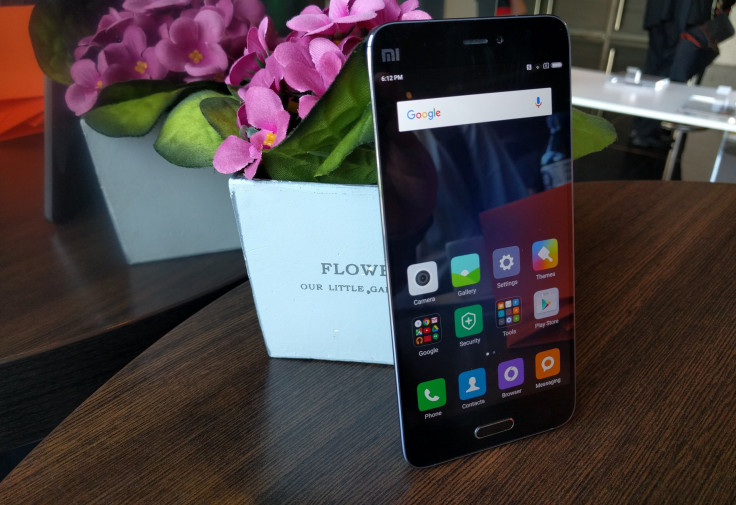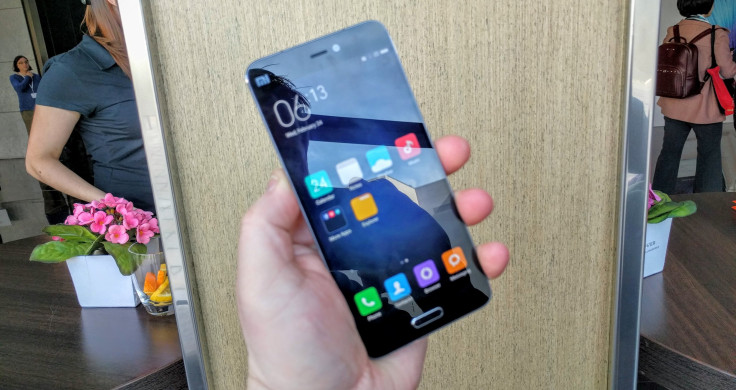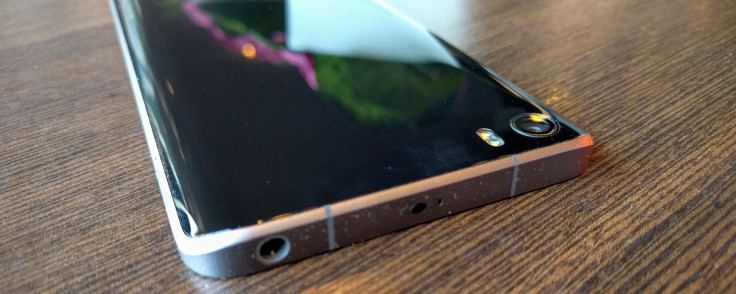Xiaomi Mi 5 Hands-On: Can It Match The Galaxy S7 Or iPhone 6S?

BARCELONA, Spain – Xiaomi has long been seen as the “Apple of the East,” and at Mobile World Congress on Wednesday it launched its latest smartphone, the Mi 5, which the company claims can match — and in many ways surpass — the best on offer from Apple or Samsung. But is this really the case?
The first thing you notice when you pick up the Mi 5 is just how small it is. It has a 5.15-inch screen, which is the same as Samsung’s Galaxy S7 and bigger than Apple’s 4.7-inch iPhone 6s. Xiaomi says it is impossible to create a truly borderless screen despite what some manufacturers might claim, but the Chinese internet company has done wonders to minimize the bezels on the Mi 5 as much as possible.
The design makes the phone incredibly compact, and compared to the likes of the Nexus 5X, which has a 5.2-inch screen, is much easier to handle. This is, in part, thanks to the curved rear of the phone, a design choice introduced in the company’s 2015 flagship model the Mi Note Pro. The phone is also incredibly light (129g) and thin (7.25mm), though it is almost too light in some respects and a bit more heft would give it a more premium feel.

The phone comes in two models. The basic model comes with a curved glass rear, while the Pro edition comes with a “nano-ceramic zirconia” coating. It’s hard to tell the difference without picking them up, but when you do, it is clear which is the more premium model. Fellow Chinese smartphone maker OnePlus launched a limited edition ceramic version of its OnePlus X smartphone last year, but the complexity and expense of being able to develop the manufacturing process to create a ceramic finish has put off most smartphone makers.
The glass-covered rear of the Mi 5 is very easily smudged with fingerprints — especially noticeable on the black model — which will annoy some, though the gold and white variants suffer less from this problem.

The screen has a relatively low resolution of 1920 x 1080 pixels but still looks great. Xiaomi claimed it adapts to the surrounding light to make it more viewable in direct sunlight, but when this was tested out, it was hard to tell if the feature was working at all.
Xiaomi spent an inordinate amount of time during the launch talking about the hardware packed into this new smartphone, and made a big play about the part Qualcomm’s Snapdragon 820 chipset played in the creation of the Mi 5. It is hard to judge exactly how much this has improved the performance, but with power efficiency boosted by 50 percent compared to the previous generation chip, it should at least help the 3000mAh battery last longer.

Xiaomi will sell the phone in 32GB, 64GB or 128GB, with the Pro version coming with a huge 4GB of RAM while the entry level model will come with a still-sizeable 3GB of RAM. It also has a CAT 12 modem, which means it will support theoretical download speeds of 600Mbps, though considering the fastest speeds you are likely to encounter these days are about 300Mpbs, the Mi 5 should be pretty future-proof.
The 16 megapixel sensor from Sony, which is powering the Mi 5 camera, is paired with a unique 4-axis optical image stabilization system that Xiaomi says makes taking low light pictures better as well as improving the capture of moving objects. Testing the camera produced excellent results in relatively challenging lighting conditions, with the detail captured very impressive.

Throughout the presentation, Xiaomi vice president Hugo Barra compared the Mi 5 to the iPhone 6s and Galaxy S6 in terms of performance, camera, design and, of course, price. The top-of-the-line model (ceramic finish, 4GB RAM, 128GB storage) will cost the equivalent of $354 while the entry-level model (glass finish, 3GB RAM, 32GB storage) will cost the equivalent of $262.
Clearly Xiaomi’s smartphone is much cheaper than the latest iPhone or Galaxy S devices, but (and this is a big but) the fact that you simply won’t be able to buy the Mi 5 if you don’t live in China, India or one of the other handful of countries Xiaomi will launch it in, means the price comparison is really not valid.
Taking the phones at face value, the Xiaomi Mi 5 is certainly an impressive device and if it ever did launch in the U.S. at the prices listed, it would likely be a huge success. The chances of that happening in 2016 are very slim, however, so for a large majority, the question of whether the Mi 5 is better than the Galaxy S7 or iPhone 6s is moot.
© Copyright IBTimes 2024. All rights reserved.












